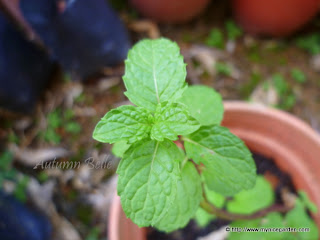Do you know what is Tico Berry?
Have you ever heard of Tico Berries?
I think most Malaysians would have never heard of tico berries until they watched the 47th episode of Ugly Betty titled, "Ugly Berry". In this episode, Ugly Betty found out that super sexy super gorgeous supermodel Adriana Lima was a fan of this super rare fruit, the tico berry!
Is tico berry a fictitious name created for the show?
Well, most of us who saw the ' rare berry' know that it looked like our rambutan. If you google for
tico berry, wikipedia will lead you to
rambutan!
Rambutan is a Malay word. "
Rambut" means hair while "
rambutan" means lots of hair.
This is a young rambutan tree at
KLCC Park. It is our indigineous tree. Rambutan trees grow wild in the tropical rainforests of Malaysia and Indonesia.
In the "Eat, Pray, Love" movie, Julia Roberts and her Brazilian partner went shopping at the wet market in Bali and came across this exotic, 'hairy fruit' called the rambutan.
Scientific name: Nephelium lappaceum
Family: Sapindaceae
Common name: Rambutan
Origin: Malaysia, Indonesia
Sapindaceae is also known as the soapberry family and it include lychee, longan, maple and horse chestnuts.
“We Have Tico Berry at KLCC Park”, a copyrighted post, was written for My Nice Garden blog by Autumn Belle @ http://www.mynicegarden.com/ on November 5th, 2010.
The rambutan fruits turn from green to bright red or yellow when riped.
Rambutan trees are commonly found here, especially in the villages and countryside. When I was little, we had a rambutan tree in my house compound. Whenever rambutans were in season (usually twice a year), the tree would be loaded with rambutan fruits and we would have so much we could not finish all, so we distributed them to our neighbours in bunches and baskets. The tree was just next to my bedroom window and I used to fantasized how nice it would be if there was a tree house/playhouse with a ladder from my window to the tree!
If there was a rambutan tree at home, there was bound to be a family member who can climb this tree. In my case, it was my dad. Some moms, grandmas, sisters and kids could achieve this feat too. It was quite necessary to climb the tree to harvest the fruits, eventhough we had a long stick or pole with hook attached. When rambutan fruits were not in season, people might also climb the tree e.g. to get a clearer view of certain exciting events or happenings, e.g. a street magic show, street medicine man demonstrating his stuff within a large crowd of people. That was old times, old times .....
When I got married and moved to the city, I had a big rambutan tree, a jackfruit tree and also 2 mango trees in my corner house compound. The trees provided shade for my children to play their outdoor games and they enjoyed riding on the wooden swing that was tied to the branches of our rambutan tree. It was home to the birds, some ferns and even provided food for the bats. It also was a good aiming target for some neighbouring kids to practice their lastic (catapult) skills on the poor little tweety birds.
When I moved to my current house, the new owners didn't want any plants or trees because they wanted to cement the whole area for parking their lorry and cars. I had to cut them down. Soon the trees were gone forever, and now, only cherised memories remain.
The rambutan is closely related to the lychee and longan. To eat the fruits, we need to peel off the skin first. We can just do this using our fingers. We eat the whitish, translucent flesh wrapped around the single seed. The best varieties have thick, sweet flesh. Rambutans are full of vitamins and minerals. When buying rambutans, it is better to select those that are still attached to the branches as these fruits last longer in storage.
As a safety precaution, we do not give the whole fruit to young children as they may accidently swallow it and choke to death. You can see that the fruit is round and slippery, so we peel off the flesh before serving it to them. Peeled rambutan flesh can be easily stored in the fridge.
Rambutan flesh can be used to make rambutan jam. You can buy canned rambutans stuffed with pineapple and use them to make fruit punch.
Rambutan trees can be propagated from seeds, by air layering or grafting.
Andrea has a picture of the young shoots of the rambutan tree in her latest post titled, "
New Growths New Life!
Do try the rambutan when you visit Malaysia!
Do you have a rambutan story to tell?
Wishing all my Hindu friends,
Happy Deepavali!
Updated: 1st Feb 2013
The following are some pictures of a matured, fruiting rambutan tree taken in Kampung Baru Kampung Timah in Tanjung Tuallang.























































